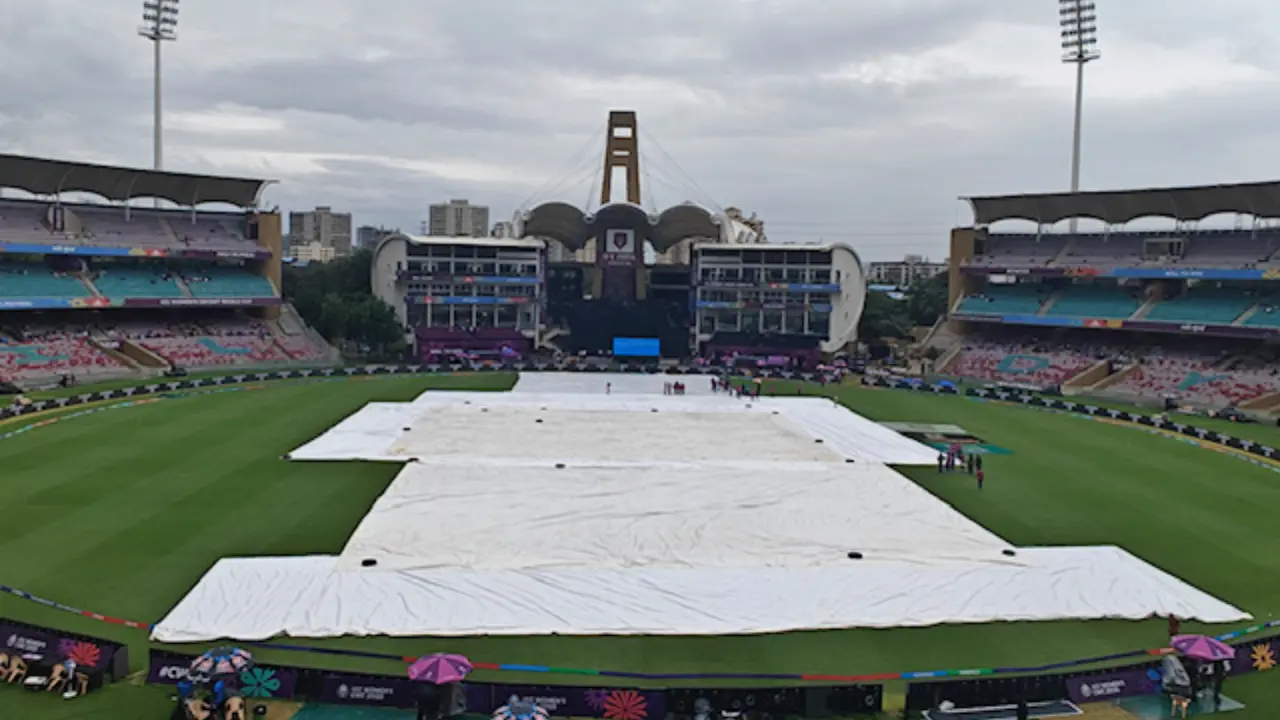It was the last league match of the ICC Women’s Cricket World Cup 2025 between India and Bangladesh. With a semifinal clash against Australia looming, India were looking to fine-tune their combinations and gain some valuable match practice. As far as Bangladesh was concerned, it was a chance to end the campaign on a high.
But the infamous Mumbai weather had other plans. The skies opened and soon the DY Patil Stadium was under a curtain of relentless rain. The 22-yards of the cricket pitch disappeared beneath the white covers and the outfield turned into a mirror of puddles. It was once again clear that the extended monsoon had drenched not just the ground but the plans of the tournament organisers.
Rains decided to play hide and seek with the emotion of the fans. There were numerous rain stops in the match which India dominated. Only 35.4 overs could be bowled and when play was called off India was 57 without loss chasing 120 in the rain-curtailed 27-over match.
However, if there was one thing that it couldn’t dampen was the spirit of the fans. Lining up since afternoon on a cloudy Sunday, the fans were not going to relent so easily. With their umbrellas out, the Mumbaikars stayed on. Although, it must be said that the stadium was not full by any stretch of imagination, but those present did stay on for majority of the game.
It may not have been the ideal experience that they had hoped for when they would have boarded the local on Mumbai’s Harbor line to reach the stadium. But as they say, man proposes, God disposes. The stadium DJ kept the crowd’s spirits high, and soon the familiar floodlight spectacle began. Fans joined in the revelry, waving their phones with flashlights on and dancing along to the beats that echoed through the stands. As the floodlights glistened off the wet outfield, the ground staff scrambling with covers, it brought a poetic pause.
And in that moment, one reflected how much women’s cricket in India has come along. There was a time in the 1970s, when a certain Mahendra Kumar Sharma (secretary of the Women’s Cricket Association of India) would go on announcing in a rickshaw in the bylanes of Lucknow, “Kanyaon ki cricket hogi, zaroor aaiye (There will be cricket for girls, do come)” The step-motherly treatment given to women’s cricket in the country can be gauged from the fact that the finals of the 1997 World Cup which was also hosted by India had to be pushed by a day as the men’s team were slated to play an ODI in the bilateral series against Sri Lanka. There are many such stories of struggle and the hurdles that women’s cricket has had to face over decades. From fighting for basic recognition and access to facilities, to playing matches with limited resources and almost no financial backing, generations of women cricketers have carried the game forward through sheer passion and perseverance. But that’s a topic for another day.
Fast track to the 2025 Women’s ODI World Cup, and things have changed. The venues have posters and billboards about the tournament and much more. But at the same time, there is no doubt that there is still room for improvement.
In Mumbai lingo, women’s cricket in India from the 1970s did probably board a slow local, but the good part is that it is marching ahead and may soon reach greater heights.

